Malaysia’s food scene is a flavorful and vibrant reflection of its rich cultural heritage. A melting pot of diverse ethnic groups, including Malays, Chinese, Indians, and various indigenous communities, Malaysia’s cuisine is an exciting fusion of influences, creating a distinctive culinary identity that’s like no other in the world. From aromatic spices to unique cooking techniques, the mixing of these cultures has given rise to a food scene that’s both eclectic and deeply rooted in tradition. Here’s how Malaysia’s diverse culture mix shapes its food and dining culture, making it a food lover’s paradise.
1. The Influence of the Malay Community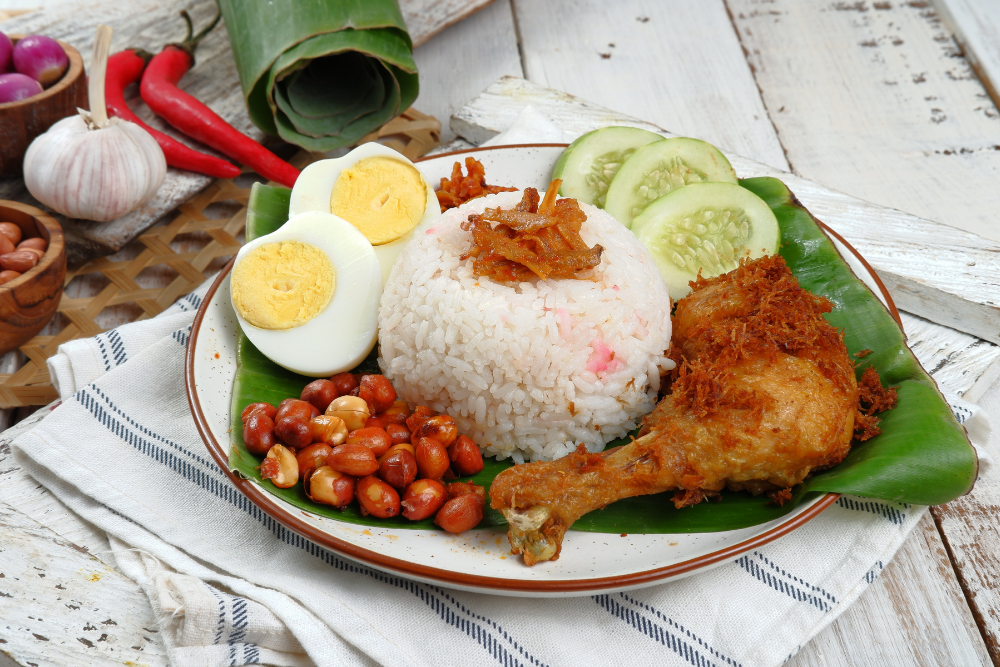
The Malay community, the indigenous people of Malaysia, has had a profound influence on the nation’s food. Traditional Malay cuisine is characterized by rich, aromatic flavors that are a blend of spices, coconut milk, and fresh herbs. Malay cuisine has influenced the food scene by introducing flavors like lemongrass, turmeric, galangal, and coconut, which have become staples in various dishes.
Signature Dishes:
- Nasi Lemak – Perhaps the most iconic Malaysian dish, Nasi Lemak consists of rice cooked in coconut milk, served with sambal (spicy chili paste), peanuts, boiled egg, and cucumber. It’s a Malay dish that’s enjoyed by people of all backgrounds.
- Rendang – A slow-cooked beef dish originating from the Malay community, Rendang is made with a blend of spices like turmeric, ginger, garlic, and chili, then simmered in coconut milk until the meat becomes tender and flavorful.
- Satay – Grilled skewers of marinated meat, often served with a rich peanut sauce, Satay reflects the Malay influence on grilling techniques and the use of sweet and savory flavors.
2. The Chinese Influence: A Taste of Tradition and Innovation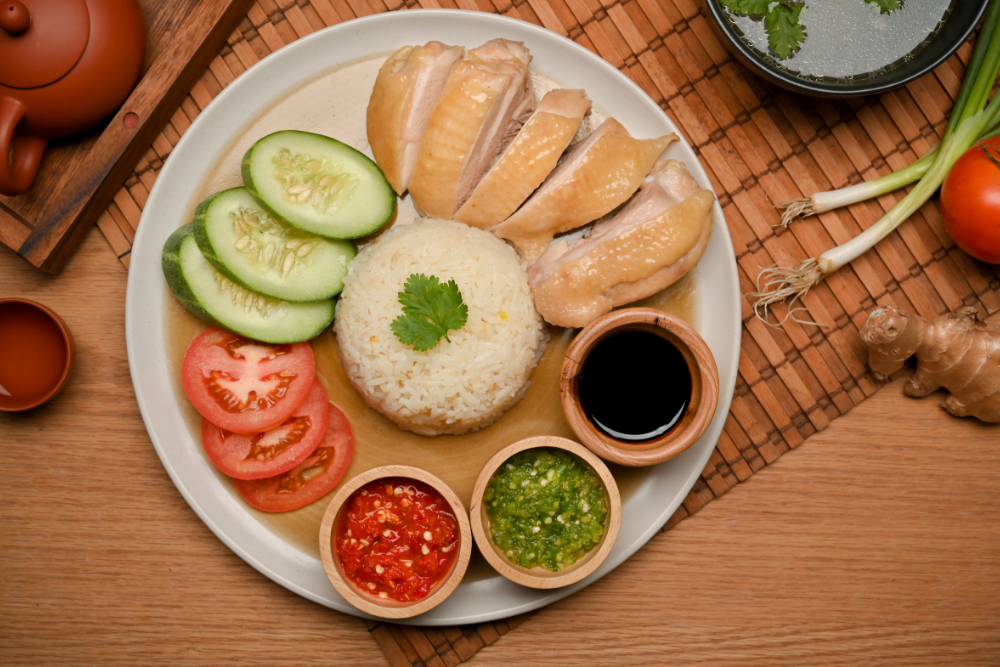
Chinese immigrants, especially from regions like Canton, Hakka, and Hokkien, have significantly shaped Malaysia’s food landscape. Chinese cooking methods such as stir-frying, steaming, and braising, combined with the use of soy sauce, vinegar, and rice wine, have enriched Malaysian cuisine.
Signature Dishes:
- Char Kway Teow – A popular street food dish in Malaysia, Char Kway Teow consists of flat rice noodles stir-fried with prawns, egg, bean sprouts, and Chinese sausage, creating a delicious blend of salty, smoky, and slightly sweet flavors.
- Hainanese Chicken Rice – This dish was introduced by Chinese immigrants from the Hainan province in China. It features tender poached chicken served with fragrant rice cooked in chicken fat, accompanied by chili sauce and ginger paste.
- Dim Sum – Reflecting Cantonese influences, Dim Sum is a collection of small bite-sized dishes such as dumplings, buns, and spring rolls, often served with tea. This style of eating, which emphasizes variety and communal sharing, is incredibly popular in Malaysia.
3. The Indian Influence: Bold Spices and Rich Curries
The Indian community, particularly Tamils and Indians from the subcontinent, have contributed to the spicy, aromatic nature of Malaysian cuisine. The use of ghee, spices like cumin, coriander, and cardamom, and the tradition of using both fresh and dried herbs is a hallmark of Indian cooking that has become interwoven into Malaysia’s food scene.
Signature Dishes:
- Roti Canai – A type of flaky flatbread, Roti Canai is an Indian-influenced dish that’s typically served with dhal (lentil curry) or a side of spicy meat curries. It’s a perfect example of how Indian influences were adapted to local tastes, creating a beloved breakfast dish in Malaysia.
- Nasi Kandar – Nasi Kandar, a dish that originated from the Indian Muslim (mamasan) community, features steamed rice served with an assortment of curries, meats, and side dishes. The robust flavors of mutton curry, fish curry, and fried chicken reflect the influence of Indian spices like garam masala and turmeric.
- Banana Leaf Rice – A traditional South Indian meal, Banana Leaf Rice involves serving rice, curries, pickles, and vegetables on a banana leaf. This communal dish reflects the Indian love for curries and rice as a base for many meals.
4. Indigenous and Southeast Asian Influences: A Fusion of Flavors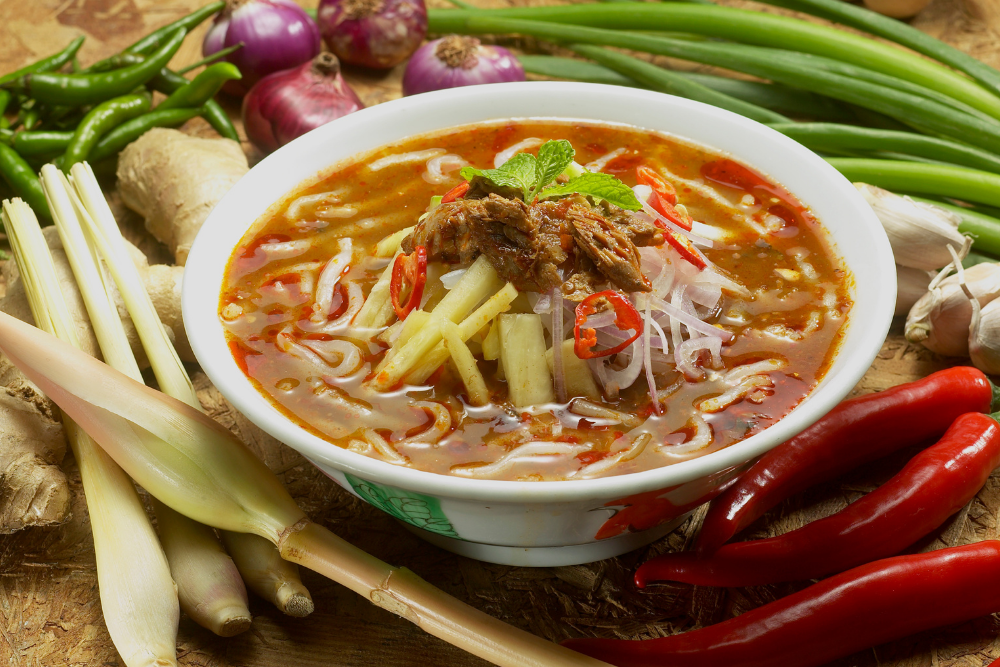
Malaysia’s indigenous groups, including the Iban, Kadazan-Dusun, and Orang Asli, have their own traditional cooking styles and ingredients that blend with broader Southeast Asian influences, particularly from neighboring Thailand and Indonesia. The use of palm sugar, tamarind, chili, and fish sauce adds a distinctive flavor to Malaysian dishes.
Signature Dishes:
- Laksa – One of Malaysia’s most famous dishes, Laksa is a spicy noodle soup that combines local ingredients and influences from Chinese, Malay, and Thai cooking. There are several variations, but the most iconic is Asam Laksa, a tamarind-based broth with mackerel fish, and Curry Laksa, a coconut milk-based soup filled with noodles, tofu, and seafood.
- Ikan Bakar – This dish, a favorite among the Malay and indigenous communities, involves grilling fish over an open flame and serving it with a spicy sambal sauce. The smoky flavors are enhanced by the use of local herbs and spices like lemongrass and turmeric.
- Ayam Penyet – A popular dish among the Malay and Indonesian communities, Ayam Penyet features deep-fried chicken that’s smashed (penyet) and served with sambal, rice, and vegetables. The rich, spicy sambal gives the dish a strong Southeast Asian character.
5. Fusion and Modern Malaysian Cuisine: A Reflection of Diversity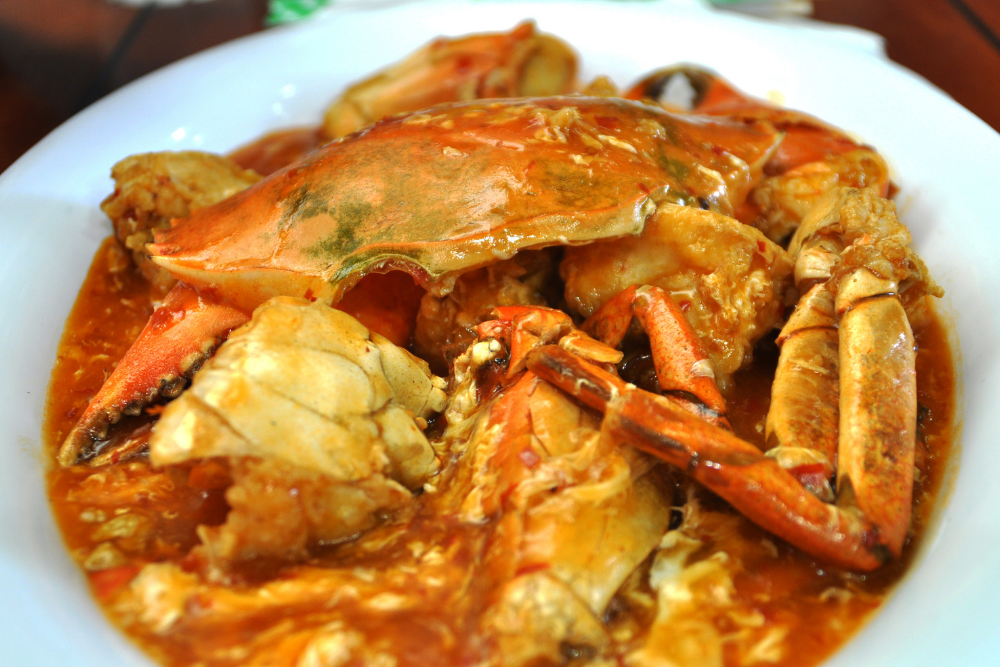
The blending of various cultural influences has led to the evolution of modern Malaysian cuisine, where traditional dishes are reinterpreted and innovated upon by creative chefs. This fusion of Malay, Chinese, Indian, and indigenous flavors has birthed new culinary trends that are unique to Malaysia.
Signature Dishes:
- Fusion Laksa – In contemporary times, fusion Laksa variations have become popular, where chefs experiment with new ingredients and cooking techniques. For example, instead of traditional noodles, you might find Laksa made with quinoa or zoodles (zucchini noodles) for a healthier take on this beloved dish.
- Nasi Lemak Burger – A modern twist on the traditional Nasi Lemak, the Nasi Lemak Burger combines the flavors of coconut rice, fried chicken, sambal, and cucumber within a burger bun, creating a fusion of Malaysian and Western fast food.
- Chili Crab Pizza – A creative combination of Chinese-style chili crab and Italian pizza, this fusion dish reflects Malaysia’s openness to blending culinary traditions to create something new and exciting.
6. Street Food Culture: A Microcosm of Malaysia’s Diversity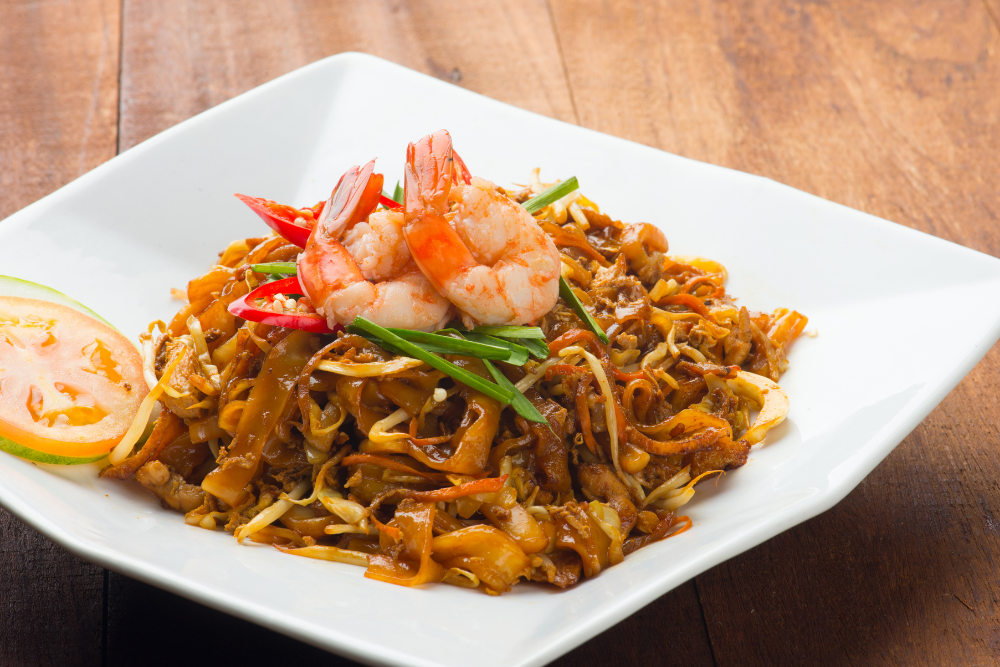
Street food in Malaysia is a direct reflection of the country’s multicultural society, offering a wide variety of affordable, flavorful dishes. The street food scene is where cultures intersect and merge, and it’s here that you’ll find some of the best examples of Malaysian fusion cuisine.
Popular Street Food:
- Char Kway Teow – A Chinese-Malay fusion dish, Char Kway Teow is stir-fried rice noodles with prawns, eggs, and bean sprouts, reflecting the harmony between Chinese cooking techniques and Malay ingredients.
- Murtabak – A dish that originated from Indian Muslim traders, Murtabak is a stuffed flatbread filled with spiced meat, onions, and eggs, showcasing the influence of Indian spices on Malay cooking.
- Apam Balik – This traditional street snack is a Malay pancake filled with a sweet mixture of peanuts and sugar. It’s an example of how the local Malay community has developed their own version of pancakes, incorporating local ingredients into a globally recognized concept.
Conclusion
Malaysia’s food scene is a delicious tapestry woven together by centuries of cultural exchange. The fusion of Malay, Chinese, Indian, and indigenous culinary traditions has not only resulted in unique dishes but also a rich, diverse food culture that appeals to both local palates and international food enthusiasts. From traditional recipes passed down through generations to innovative fusions that reflect Malaysia’s multicultural society, the country’s cuisine offers a feast for the senses that tells the story of its people. Whether you’re enjoying Nasi Lemak, savoring a plate of Char Kway Teow, or experimenting with modern dishes, Malaysia’s culture mix continues to inspire culinary creativity and flavor combinations that are both authentic and exciting.












